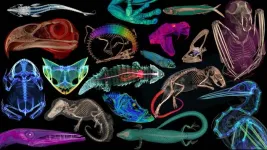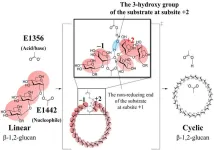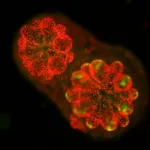Scientists uncover comparable net radiation between the high-elevation Tibetan Plateau and the low-elevation Yangtze River region
2024-03-06
(Press-News.org)
Land–atmosphere interactions play a crucial role in shaping Earth’s climate system, profoundly influencing weather patterns, climate variables, and ecological processes. Despite being located at similar latitude, the Tibetan Plateau (TP) and Yangtze River region (YRR) represent two distinct climate zones, garnering significant attention in this field. The former, situated in western China at an altitude exceeding 4000 m, is characterized by an arid climate, whereas the latter, located in the eastern Chinese plain, experiences a humid climate. Although both the TP and YRR have been subjects of individual research endeavors, a potential research gap exists concerning a comprehensive, direct comparison of their surface energy fluxes and other land–atmosphere interaction components.
Scientists from the Institute of Tibetan Plateau Research, China Academy of Sciences and Nanjing University used observations across various land-cover types to explore similarities and differences in land–atmosphere energy and water exchanges between the two regions. Their findings were recently published in Atmospheric and Oceanic Science Letters.
Due to its higher altitude and drier soil, the TP absorbs more solar radiation than the YRR and also reflects more radiation back. The yearly mean downward and upward shortwave radiation in the TP is 1.7 and 2.9 times that in the YRR, respectively. However, despite this difference, the net radiation between the two regions shows minimal disparity, primarily due to the greater values in longwave radiation of the YRR.
"Honestly, this phenomenon surprised us,” says the corresponding author, Prof. Yaoming Ma, from the Institute of Tibetan Plateau Research, who specializes in land–atmosphere interaction over the TP. “However, the TP displays larger diurnal and seasonal variations in net radiation, with intensified heating at noon and in the warm season, but substantial cooling at night and in the cold season.”
Significant variations in surface heat fluxes are evident. To facilitate comparison, the team selected the same surface types in both regions—grassland—as well as two different but typical land cover types: alpine desert for the TP and plain urban for the YRR. Surface heat fluxes were found to predominantly depend on the soil condition, with grassland in both regions exhibiting higher latent heating and lower sensible heating compared to alpine desert and urban sites.
"Soil moisture is a crucial factor affecting the distribution of energy, thereby influencing atmospheric conditions,” adds Prof. Jianning Sun from Nanjing University, another corresponding author of the paper.
Overall, this study highlights the distinct characteristics of land–atmosphere interaction across various land cover types in different climatic contexts. In the future, the team hope to quantitatively explore the contributions of additional variables, such as albedo, Bowen ratio, roughness length, and soil moisture content. However, addressing the challenges of total surface heating efficiency and energy non-closure requires in-depth analysis, drawing from extensive years of observations and soil heat flux data.
END
[Attachments] See images for this press release:
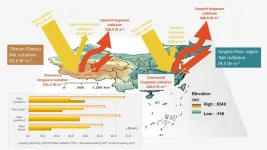
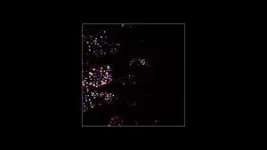
ELSE PRESS RELEASES FROM THIS DATE:
2024-03-06
Spinal muscular atrophy, or SMA, is the leading genetic cause of infant death. Less than a decade ago, Cold Spring Harbor Laboratory (CSHL) Professor Adrian Krainer showed this brutal disease can be treated by tweaking a process called RNA splicing. This breakthrough resulted in Spinraza, the first effective treatment for SMA. It also opened a new frontier in drug development. Now, CSHL research could push RNA-splicing drugs even further. CSHL Associate Professor Justin Kinney, Krainer, and postdoc Yuma Ishigami have ...
2024-03-06
Read the online version (Available 8:00 a.m. ET, March 6, 2024)
Watch the video (Embargoed. Do not distribute before 8:00 a.m. ET, March 6, 2024)
Natural history museums have entered a new stage of scientific discovery and accessibility with the completion of openVertebrate (oVert), a five-year collaborative project among 18 institutions to create 3D reconstructions of vertebrate specimens and make them freely available online.
Researchers published a summary of the project in the journal BioScience in which they review the specimens that have been scanned to date and offer a glimpse of how the data might be used to ask new questions ...
2024-03-06
More than 120 people gathered for the 2024 Innovation Network for Fusion Energy (INFUSE) Workshop at the U.S. Department of Energy’s (DOE) Princeton Plasma Physics Laboratory (PPPL) from Feb. 27-28.
The event, which was sponsored by the DOE’s Office of Fusion Energy Sciences (FES), is a part of the INFUSE awards program that funds laboratories or universities so they can partner with private sector companies working on the science and technology ...
2024-03-06
The polysaccharide β-1,2-glucan consists of repeating units of glucose linked together by β-1,2-glycosidic bonds. Cyclic β-1,2-glucans (CβGs) occur in different bacterial species and have a role in bacterial infections and symbiotic relationships. CβG biosynthesis is catalyzed by cyclic β-1,2-glucan synthase (CGS), an enzyme that catalyzes the cyclization (closed ring formation) of linear β-1,2-glucan (LβG).
Since the method for large-scale enzymatic synthesis of linear β-1,2-glucan has already been established, combining it with this enzyme is technically feasible for efficient ...
2024-03-06
Scientists have discovered the gene that enables marine algae to make a unique type of chlorophyll. They successfully implanted this gene in a land plant, paving the way for better crop yields on less land.
Finding the gene solves a long-standing mystery amongst scientists about the molecular pathways that allow the algae to manufacture this chlorophyll and survive.
“Marine algae produce half of all the oxygen we breathe, even more than plants on land. And they feed huge food webs, fish that get eaten by mammals and humans,” said UC Riverside ...
2024-03-06
Patients kept asking a question that Nathan Lo, MD, PhD, infectious disease specialist, had a hard time answering: How often should I get my booster shot for COVID-19?
“It’s a question that we have all asked. My patients have asked; friends and family members have asked,” Lo said. “We point to the national vaccine recommendations, although increasingly this question has become challenging to answer. I didn’t quite have the estimates on hand that I might hope to share with patients.”
To build that evidence, Lo and his team at Stanford ...
2024-03-06
XPANCEO, a deep tech company developing the first smart contact lenses with XR vision, health monitoring, and content surfing features, in collaboration with the Nobel laureate Konstantin S. Novoselov (National University of Singapore, University of Manchester) and professor Luis Martin-Moreno (Instituto de Nanociencia y Materiales de Aragon), has announced in Nature Communications a groundbreaking discovery of new properties of rhenium diselenide and rhenium disulfide, enabling novel mode of light-matter interaction with huge potential for integrated photonics, healthcare, and AR. Rhenium disulfide ...
2024-03-06
More than 70% of American Indian young adults aged 20-39 and 50% of American Indian teens have cholesterol levels or elevated fat in the blood that put them at risk for cardiovascular disease, suggests a study supported by the National Institutes of Health. In some cases, these levels — specifically high low-density lipoprotein (LDL) cholesterol, often thought of as “bad cholesterol,” — were linked to plaque buildup and cardiovascular events, such as heart attack and stroke.
The findings, ...
2024-03-06
New research published in the Journal of Cosmetic Dermatology reveals the effects of wearing cosmetic foundation during aerobic exercise on the skin and its pores.
The study included 43 healthy college students (20 males and 23 females). Foundation cream was applied to participants on half of the face in two different areas (forehead and upper cheek). The other half of the face served as control.
Moisture increased after exercise in both the non-makeup and makeup zones; however, there was a greater increase in moisture in the makeup zones. This may be a result of makeup preventing ...
2024-03-06
An increasing number of space objects, debris, and satellites in Low Earth Orbit poses a significant threat of collisions during space operations. The situation is currently monitored by radar and radio-telescopes that track space objects, but much of space debris is composed of very small metallic objects that are difficult to detect. In a study published in IET Radar, Sonar & Navigation, investigators demonstrate the benefits of using deep learning—a form of artificial intelligence—for small space object detection by ...
LAST 30 PRESS RELEASES:
[Press-News.org] Scientists uncover comparable net radiation between the high-elevation Tibetan Plateau and the low-elevation Yangtze River region


